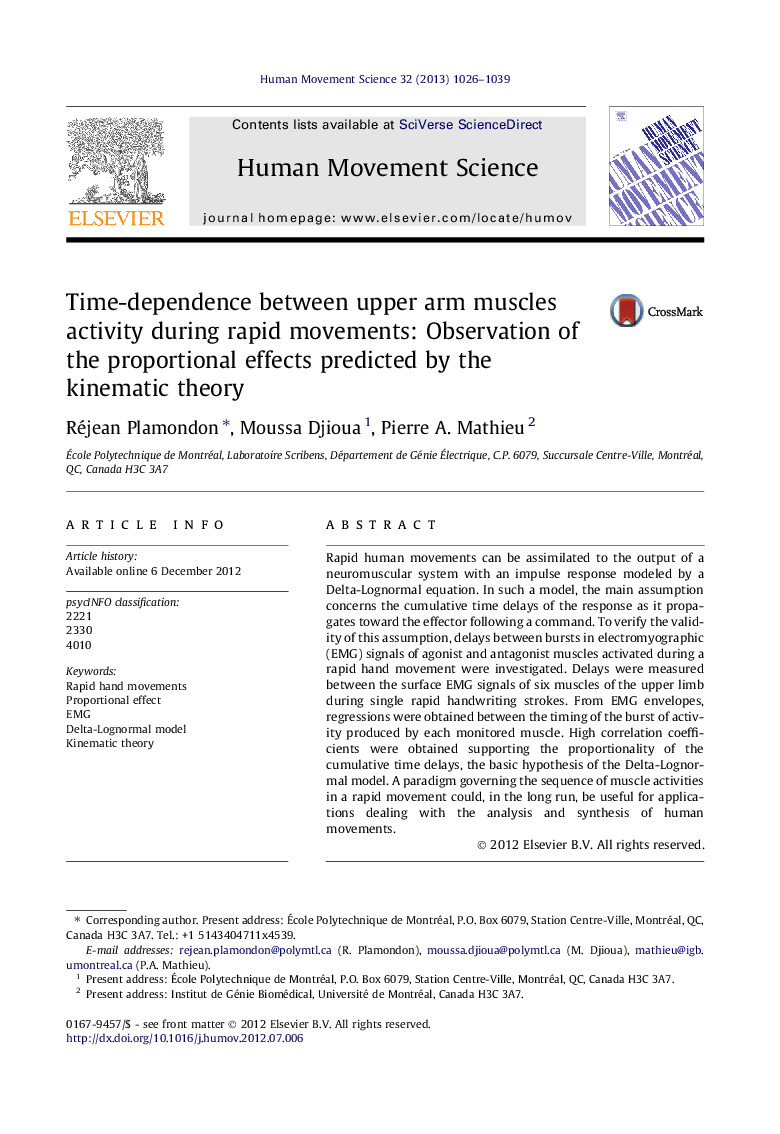| Article ID | Journal | Published Year | Pages | File Type |
|---|---|---|---|---|
| 928352 | Human Movement Science | 2013 | 14 Pages |
Rapid human movements can be assimilated to the output of a neuromuscular system with an impulse response modeled by a Delta-Lognormal equation. In such a model, the main assumption concerns the cumulative time delays of the response as it propagates toward the effector following a command. To verify the validity of this assumption, delays between bursts in electromyographic (EMG) signals of agonist and antagonist muscles activated during a rapid hand movement were investigated. Delays were measured between the surface EMG signals of six muscles of the upper limb during single rapid handwriting strokes. From EMG envelopes, regressions were obtained between the timing of the burst of activity produced by each monitored muscle. High correlation coefficients were obtained supporting the proportionality of the cumulative time delays, the basic hypothesis of the Delta-Lognormal model. A paradigm governing the sequence of muscle activities in a rapid movement could, in the long run, be useful for applications dealing with the analysis and synthesis of human movements.
